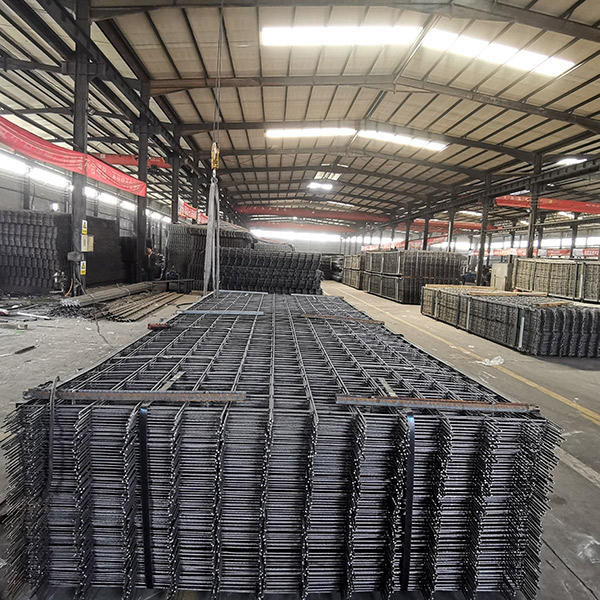Nov . 12, 2024 22:41 Back to list
reinforced welded mesh
Reinforced Welded Mesh A Comprehensive Overview
Reinforced welded mesh is an essential construction material widely utilized in various sectors, particularly in the building and civil engineering industries. This product is not just a simple mesh; it represents an innovative approach to enhancing the structural integrity and durability of concrete structures. In this article, we will explore the properties, applications, benefits, and manufacturing processes of reinforced welded mesh.
What is Reinforced Welded Mesh?
Reinforced welded mesh consists of a grid of steel wires that are welded together at their intersections to create a strong and uniform sheet. The wires can be made from high-strength steel and are typically available in various diameters and mesh sizes, depending on the application requirements. The mesh is reinforced to provide additional tensile strength, making it a crucial component in strengthening concrete structures.
Properties of Reinforced Welded Mesh
One of the prominent characteristics of reinforced welded mesh is its high tensile strength. This quality ensures that it can withstand various stresses, making it an outstanding choice for reinforcement in concrete applications. Additionally, the welded intersections of the mesh enhance its load-bearing capacity and distribute stresses evenly throughout the structure. Another key property is corrosion resistance, particularly when galvanized steel is used; this further prolongs the lifespan of the mesh, making it suitable for outdoor applications and environments with high humidity.
Applications of Reinforced Welded Mesh
Reinforced welded mesh has a wide array of applications across different sectors. In the construction industry, it is primarily used in
1. Floor Slabs It is commonly integrated into concrete floor slabs, providing the necessary reinforcement to handle heavy loads and prevent cracking.
2. Walls and Panels The mesh is often employed in precast concrete walls and panels, ensuring structural integrity and stability.
3. Roads and Pavements Reinforced welded mesh is utilized in road construction to enhance the durability and load-bearing capacity of pavements and bridges.
4. Retaining Walls In earth retention structures, the mesh provides essential reinforcement, helping to resist lateral earth pressures.
5. Reinforced Concrete Pipes The mesh can also be found in the construction of reinforced concrete pipes, enhancing their strength and durability.
Benefits of Using Reinforced Welded Mesh
reinforced welded mesh

The adoption of reinforced welded mesh brings numerous benefits to construction projects
1. Cost-Effectiveness Utilizing reinforced welded mesh can reduce the overall costs of construction by minimizing the amount of concrete required and decreasing labor costs associated with manual reinforcement.
2. Enhanced Structural Integrity The mesh provides consistent and reliable reinforcement, resulting in structures that can withstand various loads and environmental conditions.
3. Ease of Installation Reinforced welded mesh is easy to handle and install, which can significantly speed up the construction process.
4. Reduced Cracking With its uniform distribution of stresses, reinforced welded mesh minimizes the risk of cracking in concrete structures, ensuring longevity and reduced maintenance costs.
5. Environmental Benefits Many manufacturers provide eco-friendly options by using recycled materials, contributing to sustainable construction practices.
Manufacturing Process
The manufacturing of reinforced welded mesh involves several key steps
1. Wire Drawing High-quality steel wire is drawn into the desired diameter.
2. Welding The wires are arranged in a grid pattern and welded together at their intersections using high-frequency welding techniques. This process ensures a strong bond and uniformity.
3. Surface Treatment To enhance corrosion resistance, the welded mesh may undergo galvanization or other surface treatments.
4. Cutting and Packaging Finally, the mesh is cut to the required dimensions and packaged for shipment to construction sites.
Conclusion
Reinforced welded mesh is a critical material that plays a significant role in modern construction. With its remarkable strength, versatility, ease of installation, and cost-effectiveness, it meets the demands of engineers and builders worldwide. As the construction industry continues to innovate, reinforced welded mesh will undoubtedly remain a key player in shaping the future of structural safety and integrity.
-
High-Quality Steel Grating Solutions for Industrial Applications | Durable, Safety, Customization
NewsJul.13,2025
-
Advanced Solutions-CompanyX|Enterprise Efficiency&Cost Reduction
NewsJul.13,2025
-
Sustainable Manufacturing-EcoTech Innovations|Waste-to-Energy System&Zero Emissions
NewsJul.13,2025
-
Welded Wire Mesh- Buildings Wiremesh Co., Ltd.|Durable Construction Material&Industrial Strength Solution
NewsJul.13,2025
-
Smart Production Solutions-Example Corp|AI Automation&IoT Monitoring
NewsJul.13,2025
-
Advanced Industrial Solutions-Advanced Industrial Solutions|Manufacturing Efficiency&Productivity
NewsJul.13,2025

